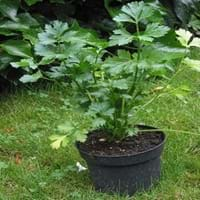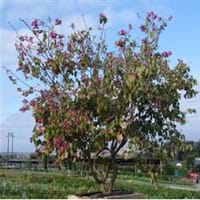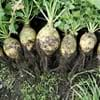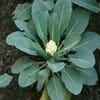Life Span
Annual or Biennial
Perennial
Origin
Europe, Northern Africa, Asia
Southeastern Asia
Types
Not Available
Bauhinia. blakeana, Bauhinia variegata Candida.
Number of Varieties
Not Available
Habitat
Coastal Regions, Marshy ground, Wet ground
tropical environments
USDA Hardiness Zone
Not Available
10-15
Sunset Zone
Not Available
H1, H2, 13, 19, 21, 23, 24
Habit
Upright/Erect
Oval or Rounded
Flower Color
White
Pink, Light Pink, Rose, Burgundy, Lavender, Violet
Flower Color Modifier
Bicolor
Bicolor
Fruit Color
Tan, Brown
Not Available
Leaf Color in Spring
Light Green
Green, Blue Green
Leaf Color in Summer
Green, Light Green
Green, Blue Green
Leaf Color in Fall
Green, Light Green
Green, Blue Green
Leaf Color in Winter
Not Available
Green, Blue Green, Yellow green
Leaf Shape
Irregular
Orbiculate
Plant Season
Spring, Summer
Spring, Fall, Winter
Sunlight
Full Sun
Full Sun, Partial Sun
Type of Soil
Loam
Loam, Sand
The pH of Soil
Neutral, Alkaline
Acidic, Neutral
Soil Drainage
Well drained
Well drained
Bloom Time
Late Spring
Late Fall, Early Winter, Winter, Late Winter
Tolerances
Drought
Drought, Salt, Variety of soil types
Where to Plant?
Container, Ground
Ground
How to Plant?
Seedlings, Transplanting
Grafting, Layering, Stem Cutting
Plant Maintenance
Low
Medium
Watering Requirements
Keep ground moist, Requires regular watering
Requires regular watering, Water more in summer
In Summer
Lots of watering
Lots of watering
In Spring
Moderate
Moderate
In Winter
Average Water
Average Water
Soil pH
Neutral, Alkaline
Acidic, Neutral
Soil Type
Loam
Loam, Sand
Soil Drainage Capacity
Well drained
Well drained
Sun Exposure
Full Sun
Full Sun, Partial shade, Partial Sun
Pruning
Remove damaged leaves, Remove shoots
Cut or pinch the stems, Prune ocassionally, Remove damaged leaves, Remove dead branches, Remove dead leaves
Fertilizers
Less fertilizing
Less fertilizing
Pests and Diseases
Bacteria, Downy mildew, Fungal Diseases, fungus, Mosaic viruses, Pink Root, Red blotch
Bacterial leaf scorch, Borers, Caterpillars, Leaf spot, Mites
Plant Tolerance
Frost
Drought, Salt, Variety of soil types
Flower Petal Number
Single
Single
Fragrant Bark/Stem
Yes
No
Foliage Texture
Coarse
Medium
Foliage Sheen
Glossy
Matte
Attracts
Insects, Mice, Rodents, Spider Mites
Bees, Birds
Allergy
Irritation to stomach
Not Available
Aesthetic Uses
Not Available
Beautification, Bouquets, Cottage Garden, Showy Purposes
Beauty Benefits
Good for skin, Improve skin condition, Moisturizing, Skin Problems
Not Available
Environmental Uses
Air purification, Food for animals, Food for birds, Food for insects
Air purification
Medicinal Uses
Cancer, Combats Stress, Eye Problems, High blood pressure, High cholestrol, Indigestion, Inflammation, Weight loss
Not Available
Part of Plant Used
Leaves, Seeds
Flowers, Leaves, Seeds
Other Uses
Employed in herbal medicine, Oil is used in perfume, soaps, creams, etc., Used As Food, Used for its medicinal properties, Used as a spice
Food for insects, Used As Food
Used As Indoor Plant
Yes
No
Used As Outdoor Plant
Yes
Yes
Garden Design
Container, Edible, Herb / Vegetable
Container, Feature Plant, Hedges, Mixed Border, Screening / Wind Break, Shade Trees, Street Trees, Tropical
Botanical Name
APIUM graveolens
BAUHINIA blakeana
Common Name
Celery
Blake's Butterfly Tree, Chinese Orchid Tree, Hong Kong Orchid Tree
In Hindi
अजवायन
हांगकांग आर्किड पेड़
In German
Sellerie
Hong Kong Orchidee Baum
In French
Céleri
Hong Kong arbre d'orchidée
In Spanish
Apio
árbol de orquídea Hong Kong
In Greek
Σέλινο
δέντρο ορχιδέα Χονγκ Κονγκ
In Portuguese
Aipo
árvore de orquídea de Hong Kong
In Polish
Seler
storczyk drzewo Hong Kong
In Latin
apium
Hong Kong Orchid ligno
Phylum
Tracheophyta
Angiosperms
Class
Magnoliopsida
Magnoliopsida
Clade
Angiosperms, Asterids, Eudicots
Angiosperms, Eudicots, Rosids
Tribe
Apieae
Not Available
Subfamily
Apioideae
Caesalpinioideae
Number of Species
Not Available
Season and Care of Celery and Hong Kong Orchid Tree
Season and care of Celery and Hong Kong Orchid Tree is important to know. While considering everything about Celery and Hong Kong Orchid Tree Care, growing season is an essential factor. Celery season is Spring and Summer and Hong Kong Orchid Tree season is Spring and Summer. The type of soil for Celery is Loam and for Hong Kong Orchid Tree is Loam, Sand while the PH of soil for Celery is Neutral, Alkaline and for Hong Kong Orchid Tree is Acidic, Neutral.
Celery and Hong Kong Orchid Tree Physical Information
Celery and Hong Kong Orchid Tree physical information is very important for comparison. Celery height is 45.70 cm and width 30.50 cm whereas Hong Kong Orchid Tree height is 460.00 cm and width 460.00 cm. The color specification of Celery and Hong Kong Orchid Tree are as follows:
Celery flower color: White
Celery leaf color: Light Green
Hong Kong Orchid Tree flower color: Pink, Light Pink, Rose, Burgundy, Lavender and Violet
- Hong Kong Orchid Tree leaf color: Green and Blue Green
Care of Celery and Hong Kong Orchid Tree
Care of Celery and Hong Kong Orchid Tree include pruning, fertilizers, watering etc. Celery pruning is done Remove damaged leaves and Remove shoots and Hong Kong Orchid Tree pruning is done Cut or pinch the stems, Prune ocassionally, Remove damaged leaves, Remove dead branches and Remove dead leaves. In summer Celery needs Lots of watering and in winter, it needs Average Water. Whereas, in summer Hong Kong Orchid Tree needs Lots of watering and in winter, it needs Average Water.





